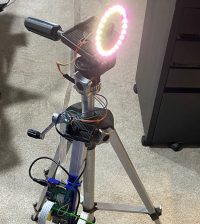- makeITcircular 2024 content launched – Part of Maker Faire Rome 2024Posted 2 weeks ago
- Application For Maker Faire Rome 2024: Deadline June 20thPosted 2 months ago
- Building a 3D Digital Clock with ArduinoPosted 7 months ago
- Creating a controller for Minecraft with realistic body movements using ArduinoPosted 7 months ago
- Snowflake with ArduinoPosted 8 months ago
- Holographic Christmas TreePosted 8 months ago
- Segstick: Build Your Own Self-Balancing Vehicle in Just 2 Days with ArduinoPosted 8 months ago
- ZSWatch: An Open-Source Smartwatch Project Based on the Zephyr Operating SystemPosted 9 months ago
- What is IoT and which devices to usePosted 9 months ago
- Maker Faire Rome Unveils Thrilling “Padel Smash Future” Pavilion for Sports EnthusiastsPosted 10 months ago
Raspberry Pi Launched the New Compute Module 3+

The Raspberry Pi Compute Module 3+ (CM3+), revealed by Raspberry Pi Trading, is designed as a drop-in replacement for the existing Raspberry Pi Compute Module 3.
Built for industrial and enterprise clients who want to use the Pi platform with their own custom boards, the CM3+ is the size and shape of a DDR2 SODIMM module and pops directly into an industry-standard SODIMM slot too.
The Raspberry Pi CM3+ features the same BCM2837B0 processor as the latest-generation Raspberry Pi 3B+. Compared to last gen’s compute module, It’s a slight upgrade over the BCM2837. However, the BCM2837B0 in the CM3+ will only run at 1.2 GHz (an identical speed to the CM3), as opposed to the 1.4 GHz found in its more mainstream sibling, the 3B+.
Although you’re limited to the previous 1.2GHz, you get more flash memory options than the 4GB eMMC found on the CM3. Once again, there’s a Lite model ($25) with circuitry for connecting to a microSD slot instead of onboard flash. In place of the 4GB model, there are 8GB ($30), 16GB ($35), and 32GB ($40) options.
The other major improvement, which is enabled by an improved PCB thermal design and the new BCM2837B0 SoC, is a wider operating range of -20 to 70°.
Like its predecessors, the CM3+ is the same size as a DDR2 small outline dual in-line memory module, and is a flat board, as it lacks the bulky USB and HDMI connectors found on the traditional Pi boards.
All of these interfaces are still available on the CM3+, but like earlier CM boards, the CM3+ plugs into a user-created carrier board, via a standard 200-pin DDR2 SODIMM connector, and it is up to the user which ports they chose to expose.
















